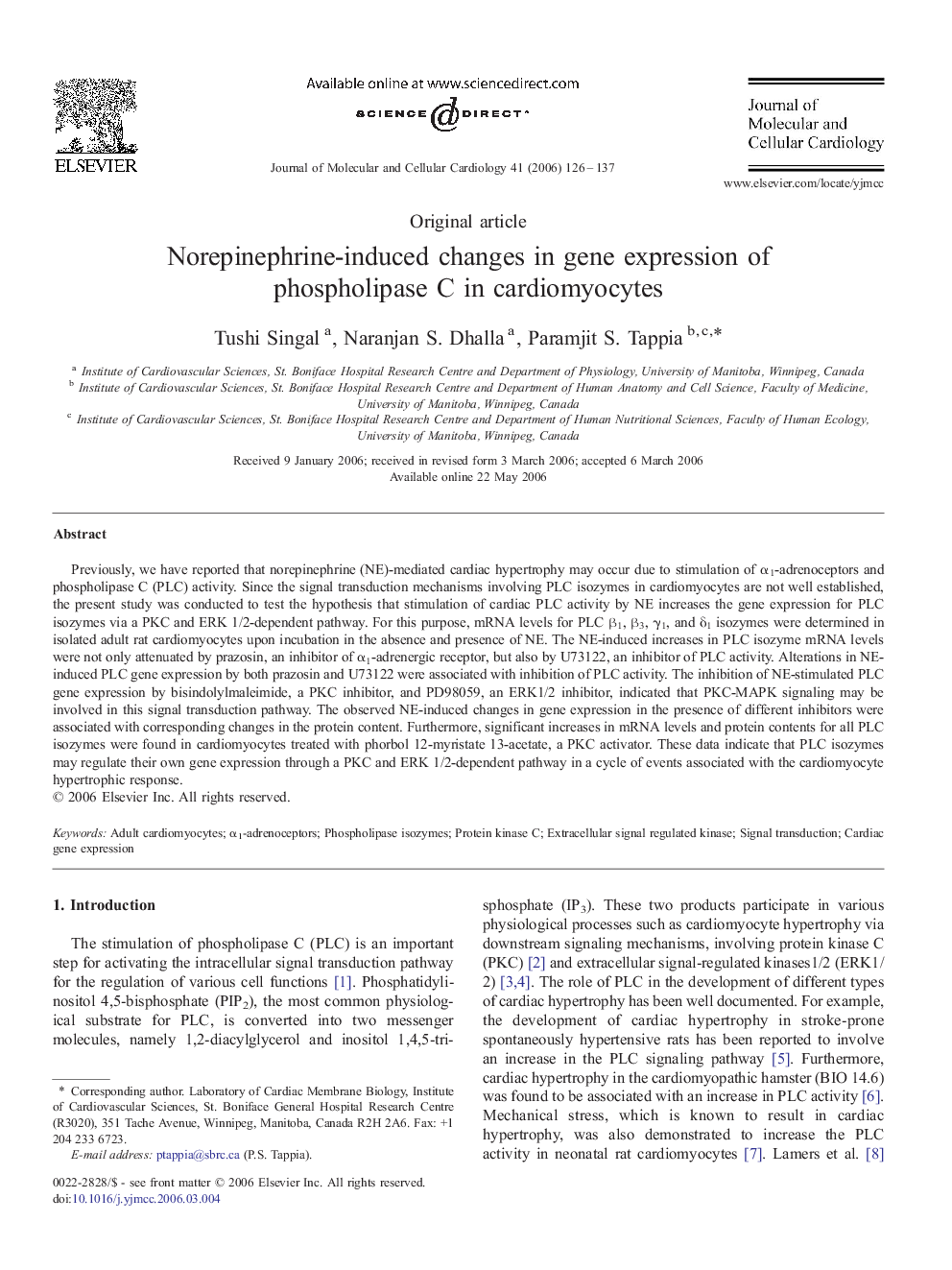| Article ID | Journal | Published Year | Pages | File Type |
|---|---|---|---|---|
| 2192460 | Journal of Molecular and Cellular Cardiology | 2006 | 12 Pages |
Previously, we have reported that norepinephrine (NE)-mediated cardiac hypertrophy may occur due to stimulation of α1-adrenoceptors and phospholipase C (PLC) activity. Since the signal transduction mechanisms involving PLC isozymes in cardiomyocytes are not well established, the present study was conducted to test the hypothesis that stimulation of cardiac PLC activity by NE increases the gene expression for PLC isozymes via a PKC and ERK 1/2-dependent pathway. For this purpose, mRNA levels for PLC β1, β3, γ1, and δ1 isozymes were determined in isolated adult rat cardiomyocytes upon incubation in the absence and presence of NE. The NE-induced increases in PLC isozyme mRNA levels were not only attenuated by prazosin, an inhibitor of α1-adrenergic receptor, but also by U73122, an inhibitor of PLC activity. Alterations in NE-induced PLC gene expression by both prazosin and U73122 were associated with inhibition of PLC activity. The inhibition of NE-stimulated PLC gene expression by bisindolylmaleimide, a PKC inhibitor, and PD98059, an ERK1/2 inhibitor, indicated that PKC-MAPK signaling may be involved in this signal transduction pathway. The observed NE-induced changes in gene expression in the presence of different inhibitors were associated with corresponding changes in the protein content. Furthermore, significant increases in mRNA levels and protein contents for all PLC isozymes were found in cardiomyocytes treated with phorbol 12-myristate 13-acetate, a PKC activator. These data indicate that PLC isozymes may regulate their own gene expression through a PKC and ERK 1/2-dependent pathway in a cycle of events associated with the cardiomyocyte hypertrophic response.
